Abstract
The respiratory health of workers exposed to polyvinylchloride (PVC) dust has been investigated in 818 men sampled from the work force of a factory manufacturing PVC. In a cross-sectional survey, the lung function and prevalences of respiratory symptoms and chest radiographic abnormalities were compared with estimates of individual PVC dust exposures based on detailed occupational histories and current measurements of respirable PVC dust. Complaints of slight exertional dyspnoea were associated with PVC dust exposure, though age and smoking effects were much stronger. The forced expired volume in one second (FEV1) and forced vital capacity (FVC) were inversely related to dust exposure after age, height, and smoking effects had been taken into account. This effect was seen principally in cigarette smokers, and there was suggestive evidence that PVC dust exposure and cigarette smoking interacted in the reduction of FEV1 and FVC. Gas transfer factor was not related to dust exposure. The chest radiographs were read according to the ILO U/C classification by three experienced readers. One reader recorded a low prevalence of small rounded opacities, and these were not related to age or dust exposure. Another reader recorded a higher prevalence of small rounded opacities category 0/1 or more, and these were related to age but not to dust exposure. The third reader recorded the highest prevalence of small rounded opacities (though none greater than category 1/1), and these were independently related both to age and to PVC dust exposure, indicating an effect of PVC dust on the appearance of the chest radiography. These appearances were so slight that only the higher sensitivity of this reader in the interpretation of profusion of small rounded opacities on the ILO U/C scale enabled detection of this effect of PVC dust. In conclusion, exposure to PVC dust is associated with some deterioration of lung function, slight abnormalities of the chest radiograph, and complaints of slight dyspnoea. The mean decline in FEV1 associated with the average dust exposure experienced in the study was small, though some of the men with higher dust exposures may have suffered clinically important loss of lung function as a result of their occupation.
Full text
PDF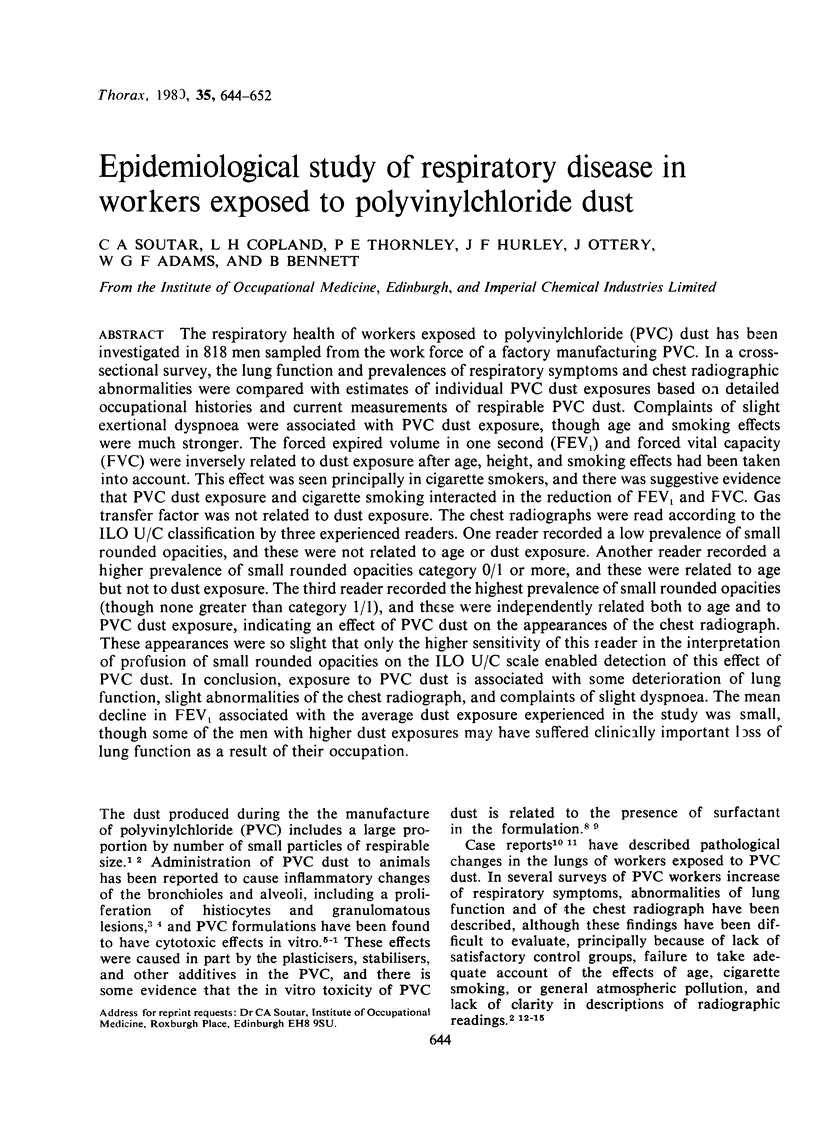
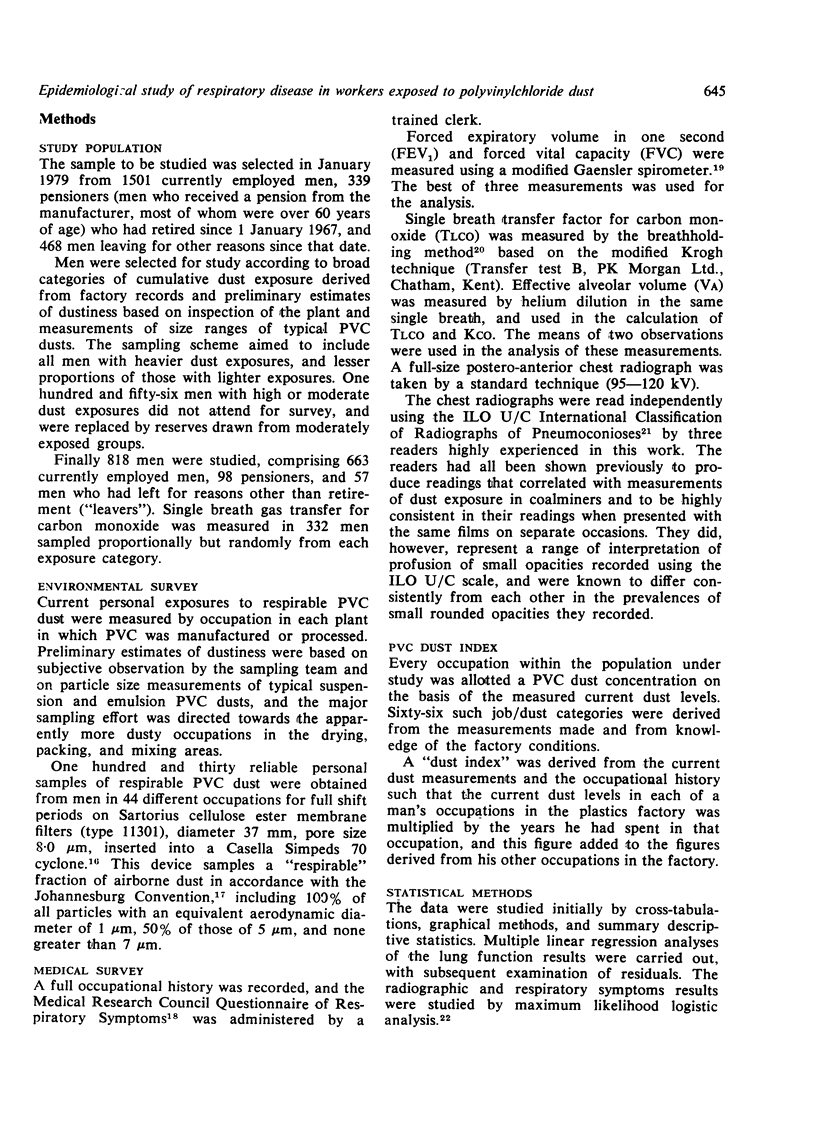
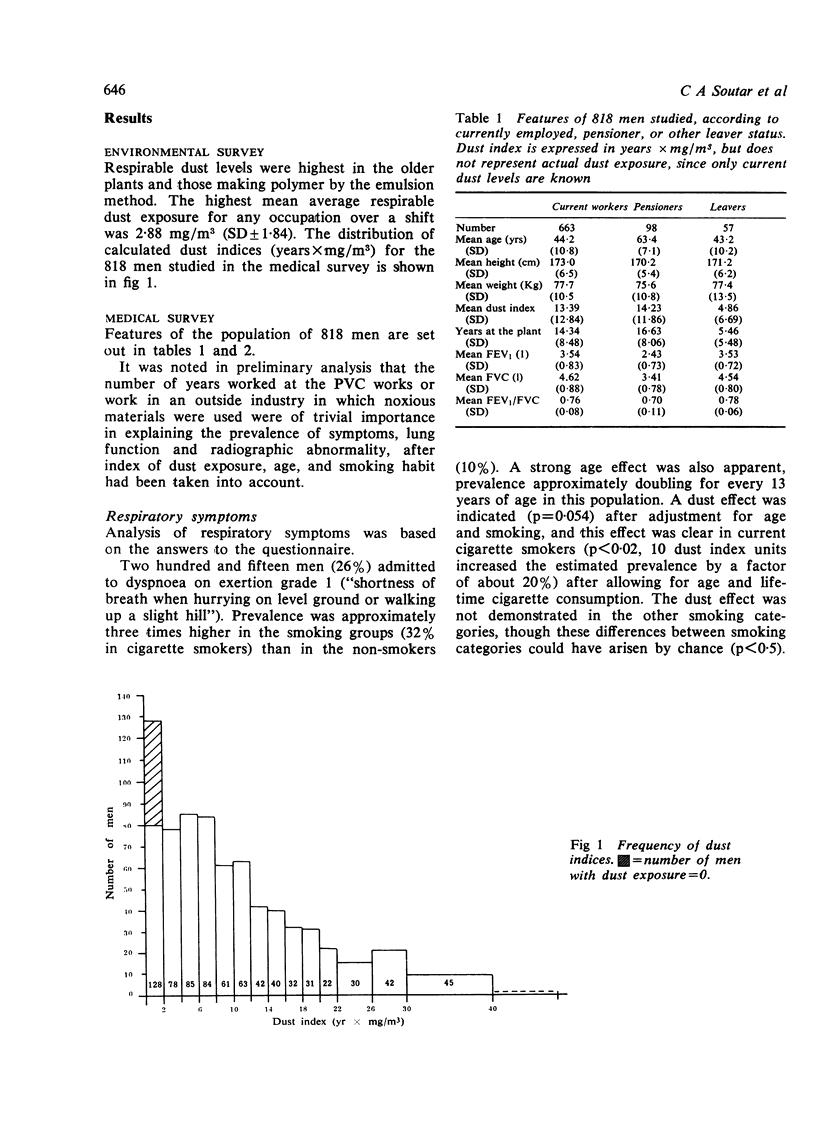
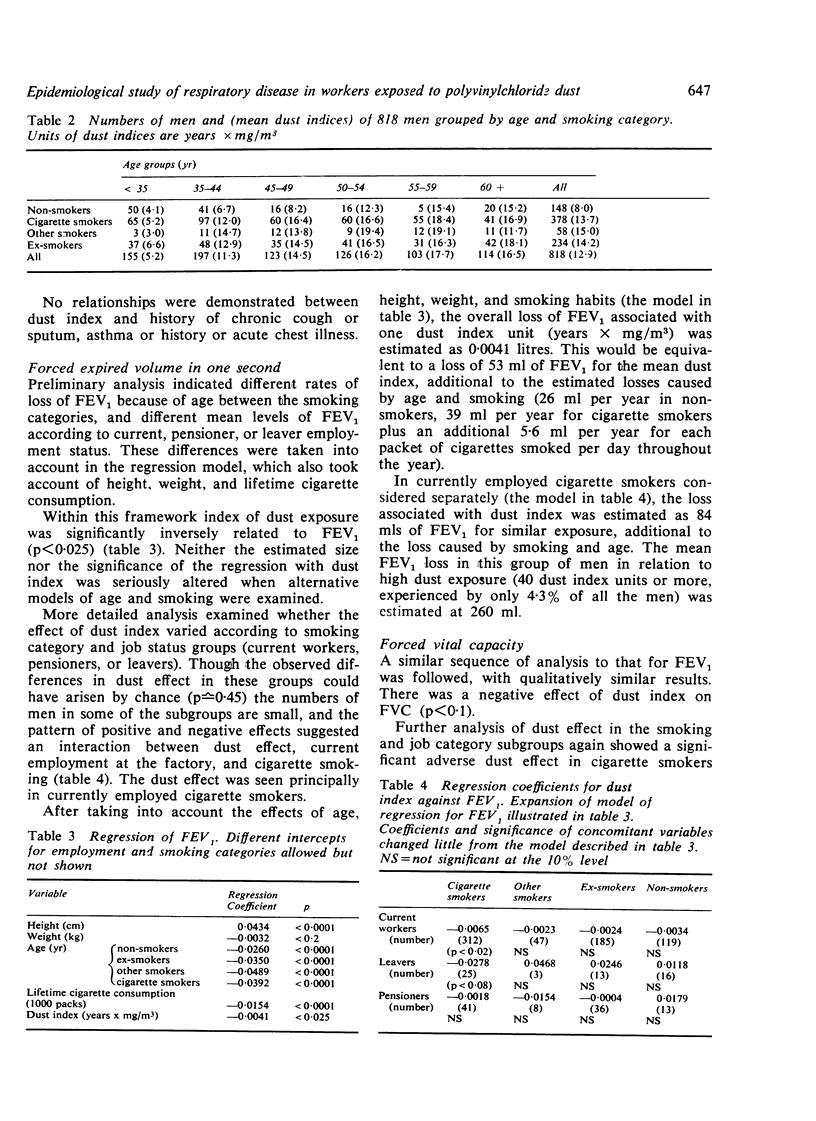
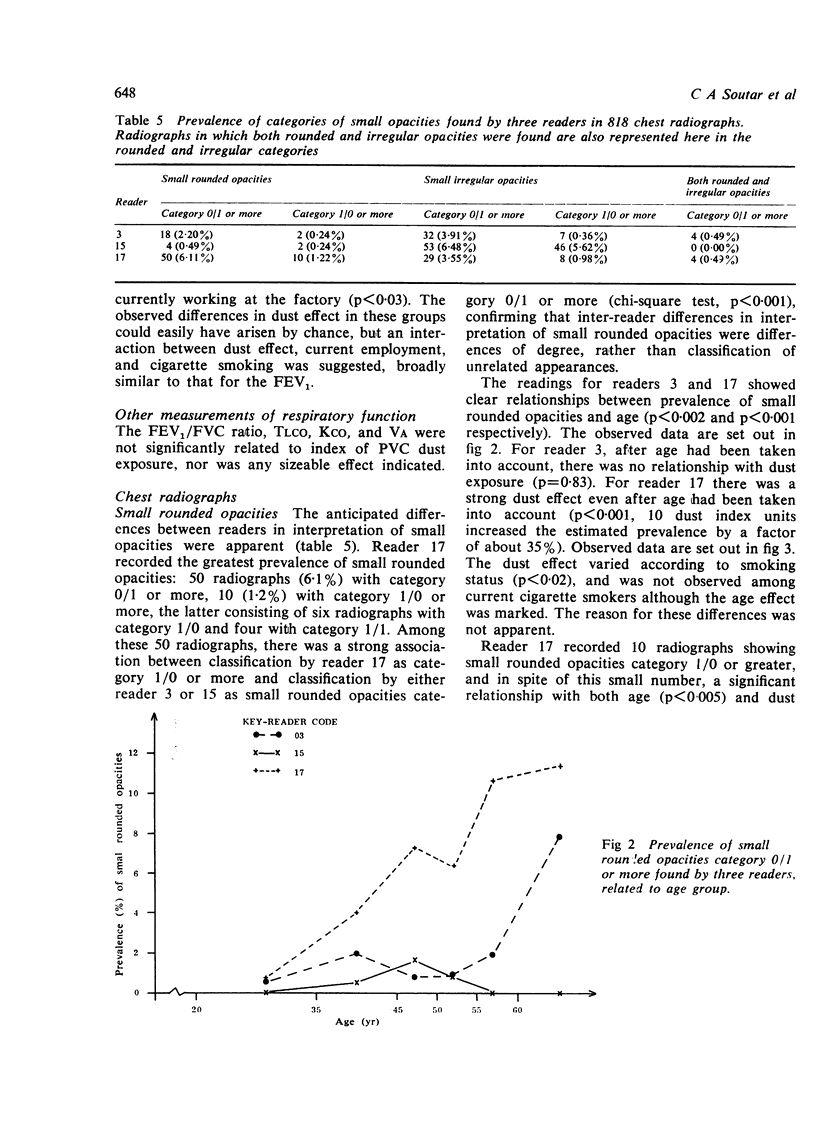
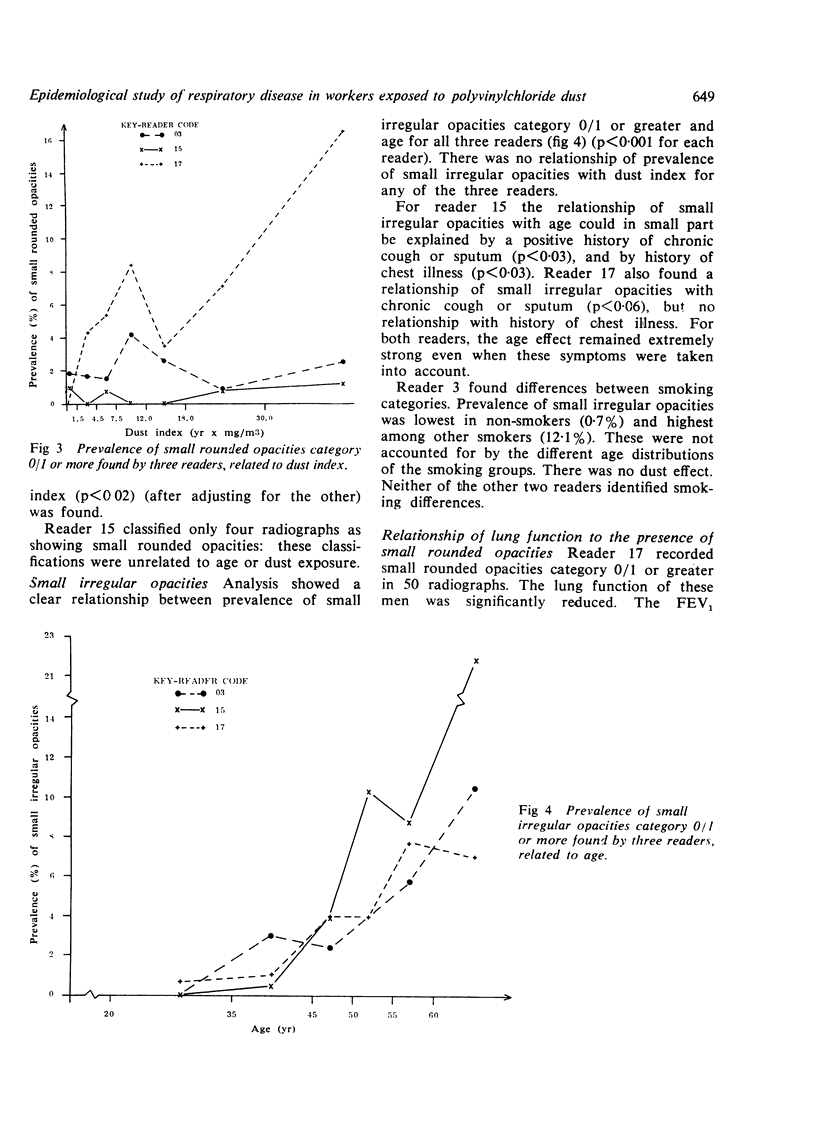
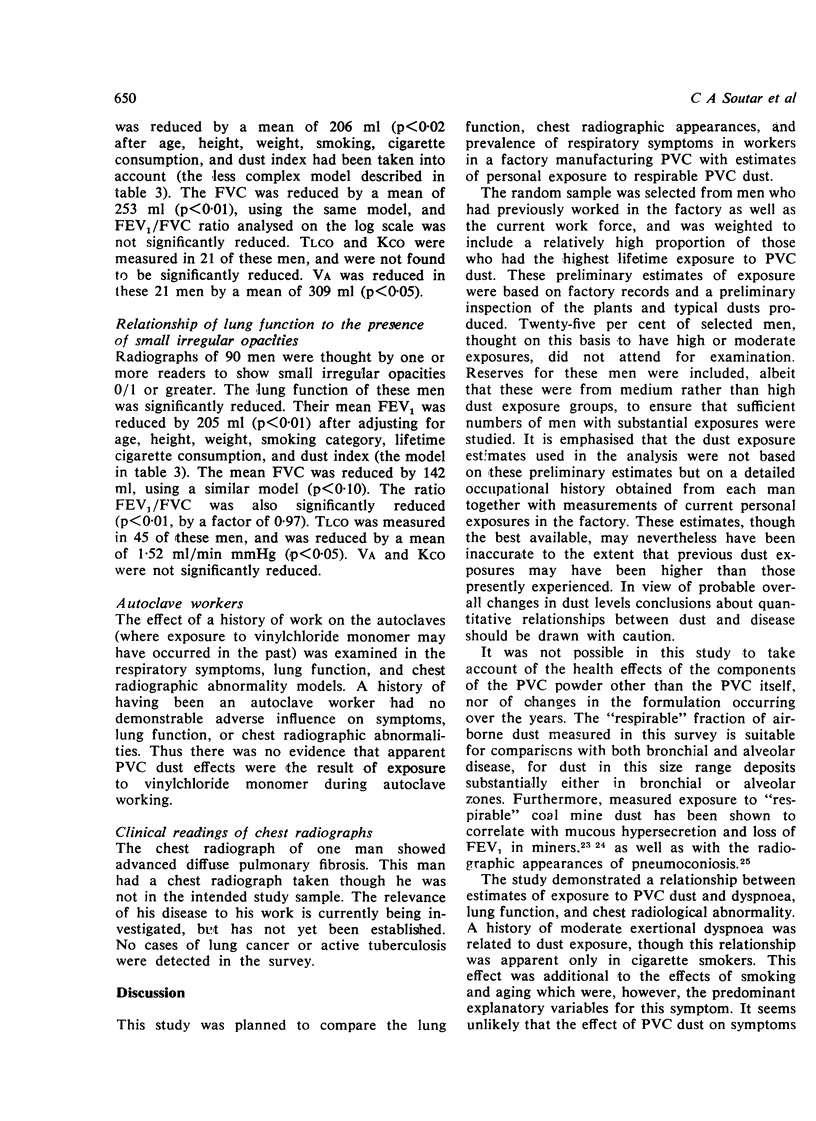
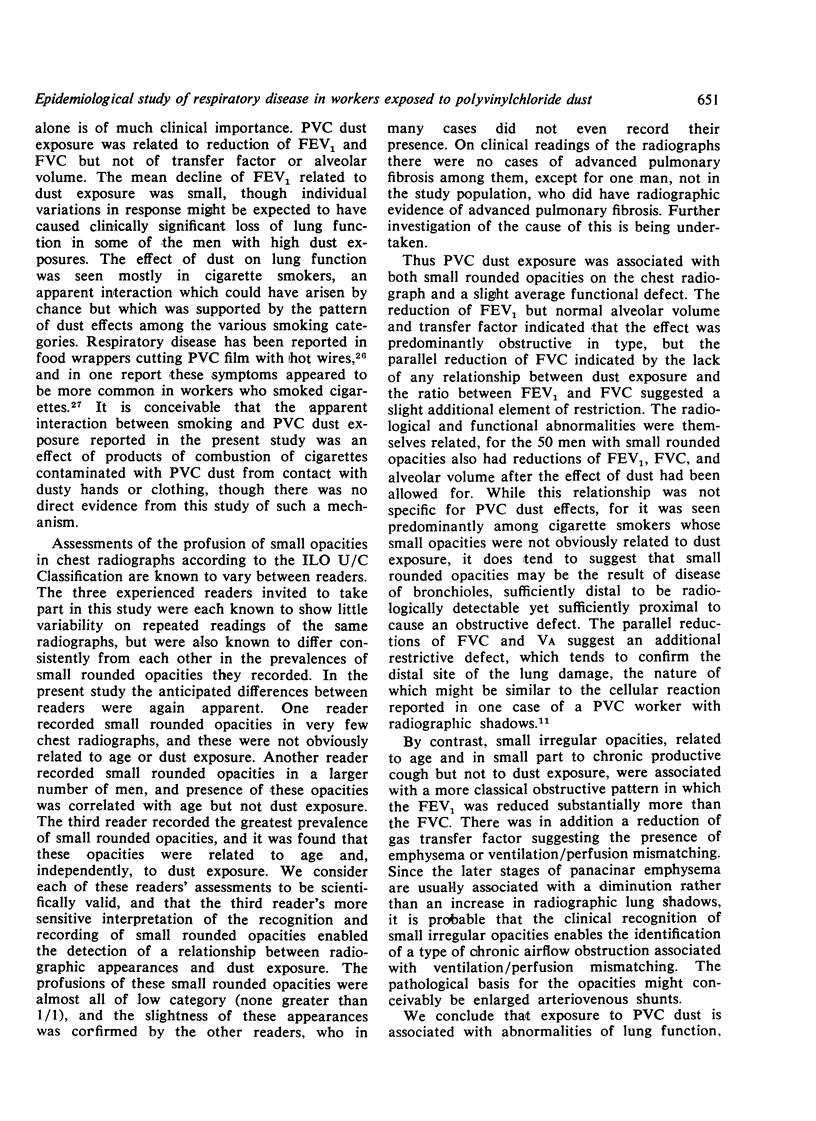
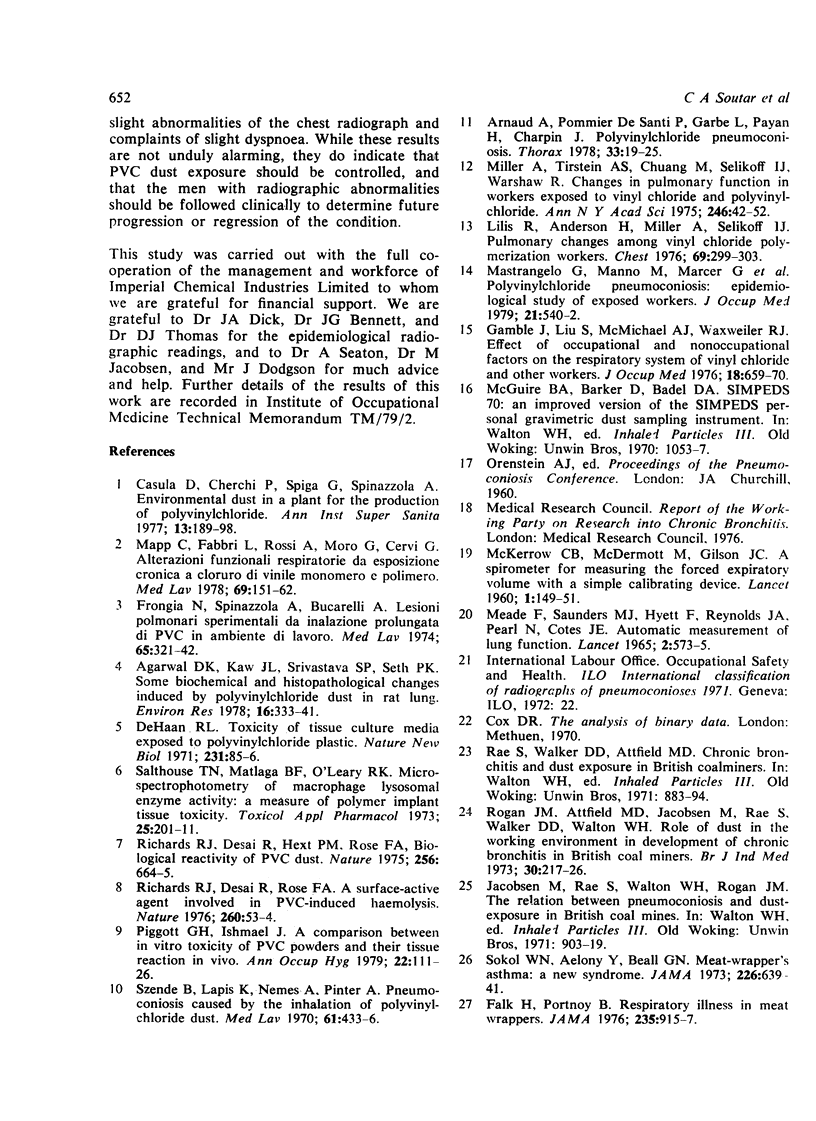
Selected References
These references are in PubMed. This may not be the complete list of references from this article.
- Agarwal D. K., Kaw J. L., Srivastava S. P., Seth P. K. Some biochemical and histopathological changes induced by polyvinyl chloride dust in rat lung. Environ Res. 1978 Jul;16(1-3):333–341. doi: 10.1016/0013-9351(78)90166-4. [DOI] [PubMed] [Google Scholar]
- Arnaud A., Pommier de Santi P. P., Garbe L., Payan H., Charpin J. Polyvinyl chloride pneumoconiosis. Thorax. 1978 Feb;33(1):19–25. doi: 10.1136/thx.33.1.19. [DOI] [PMC free article] [PubMed] [Google Scholar]
- Casula D., Cherchi P., Spiga G., Spinazzola A. Studio sulla polverosità ambientale di un impianto per la produzione di cloruro di polivinile. Ann Ist Super Sanita. 1977;13(1-2):189–198. [PubMed] [Google Scholar]
- DeHaan R. L. Toxicity of tissue culture media exposed to polyvinyl chloride plastic. Nat New Biol. 1971 May 19;231(20):85–86. doi: 10.1038/newbio231085a0. [DOI] [PubMed] [Google Scholar]
- Falk H., Portnoy B. Respiratory tract illness in meat wrappers. JAMA. 1976 Mar 1;235(9):915–917. [PubMed] [Google Scholar]
- Frongia N., Spinazzola A., Bucarelli A. Lesioni polmonari sperimentali da inalazione prolungata di polveri di PVC in ambiente di lavoro. Med Lav. 1974 Sep-Oct;65(9-10):321–342. [PubMed] [Google Scholar]
- Gamble J., Liu S., McMichael A. J., Waxweiler R. J. Effect of occupational and nonoccupational factors on the respiratory system of vinyl chloride and other workers. J Occup Med. 1976 Oct;18(10):659–670. doi: 10.1097/00043764-197610000-00006. [DOI] [PubMed] [Google Scholar]
- Lilis R., Anderson H., Miller A., Selikoff I. J. Pulmonary changes among vinyl chloride polymerization workers. Chest. 1976 Feb;69(2 Suppl):299–303. doi: 10.1378/chest.69.2.299. [DOI] [PubMed] [Google Scholar]
- Maguire B. A., Barker D., Badel D. A. SIMPEDS 70: an improved version of the SIMPEDS personal gravimetric dust sampling instrument. Inhaled Part. 1970;2:1053–1057. [PubMed] [Google Scholar]
- Mapp C., Fabbri L., Rossi A., Moro G., Cervi G. Alterazioni funzionali respiratorie da esposizione cronica a cloruro di vinile monomero e polimero. Med Lav. 1978 Mar-Apr;69(2):151–162. [PubMed] [Google Scholar]
- Mastrangelo G., Manno M., Marcer G., Bartolucci G. B., Gemignani C., Saladino G., Simonato L., Saia B. Polyvinyl chloride pneumoconiosis: epidemiological study of exposed workers. J Occup Med. 1979 Aug;21(8):540–542. [PubMed] [Google Scholar]
- Meade F., Saunders M. J., Hyett F., Reynolds J. A., Pearl N., Cotes J. E. Automatic measurement of lung function. Lancet. 1965 Sep 18;2(7412):573–575. doi: 10.1016/s0140-6736(65)90874-3. [DOI] [PubMed] [Google Scholar]
- Miller A., Teirstein A. S., Chuang M., Selikoff I. J., Warshaw R. Changes in pulmonary function in workers exposed to vinyl chloride and polyvinyl chloride. Ann N Y Acad Sci. 1975 Jan 31;246:42–52. doi: 10.1111/j.1749-6632.1975.tb51079.x. [DOI] [PubMed] [Google Scholar]
- Pigott G. H., Ishmael J. A comparison between in vitro toxicity of PVC powders and their tissue reaction in vivo. Ann Occup Hyg. 1979;22(2):111–126. doi: 10.1093/annhyg/22.2.111. [DOI] [PubMed] [Google Scholar]
- Richards R. J., Desai R., Hext P. M., Rose F. A. Biological reactivity of PVC dust. Nature. 1975 Aug 21;256(5519):664–665. doi: 10.1038/256664a0. [DOI] [PubMed] [Google Scholar]
- Richards R. J., Desai R., Rose F. A. A surface-active agent involved in PVC-induced haemolysis. Nature. 1976 Mar 4;260(5546):53–54. doi: 10.1038/260053a0. [DOI] [PubMed] [Google Scholar]
- Rogan J. M., Attfield M. D., Jacobsen M., Rae S., Walker D. D., Walton W. H. Role of dust in the working environment in development of chronic bronchitis in British coal miners. Br J Ind Med. 1973 Jul;30(3):217–226. doi: 10.1136/oem.30.3.217. [DOI] [PMC free article] [PubMed] [Google Scholar]
- Salthouse T. N., Matlaga B. F., O'Leary R. K. Microspectrophotometry of macrophage lysosomal enzyme activity: a measure of polymer implant tissue toxicity. Toxicol Appl Pharmacol. 1973 Jun;25(2):201–211. doi: 10.1016/s0041-008x(73)80006-7. [DOI] [PubMed] [Google Scholar]
- Sokol W. N., Aelony Y., Beall G. N. Meat-wrapper's asthma. A new syndrome? JAMA. 1973 Nov 5;226(6):639–641. [PubMed] [Google Scholar]
- Szende B., Lapis K., Nemes A., Pinter A. Pneumoconiosis caused by the inhalation of polyvinylchloride dust. Med Lav. 1970 Aug-Sep;61(8):433–436. [PubMed] [Google Scholar]


